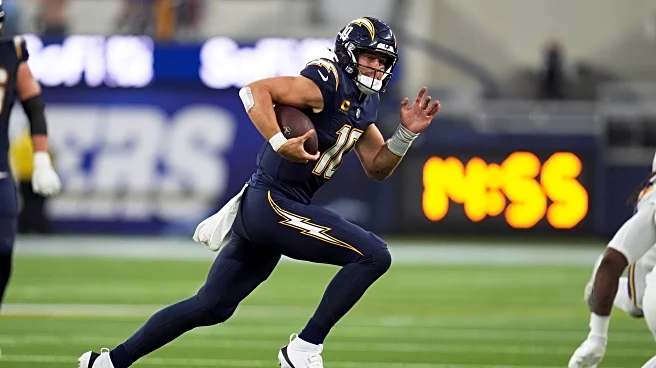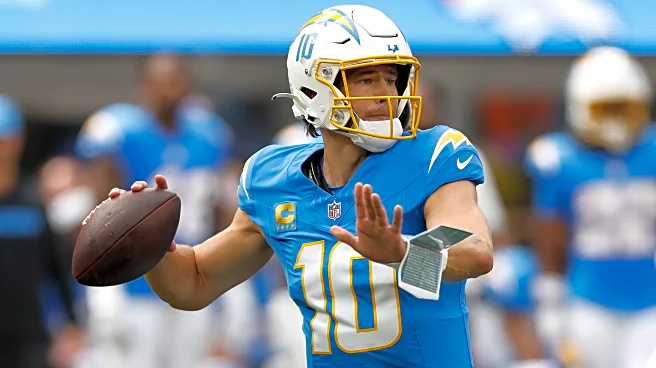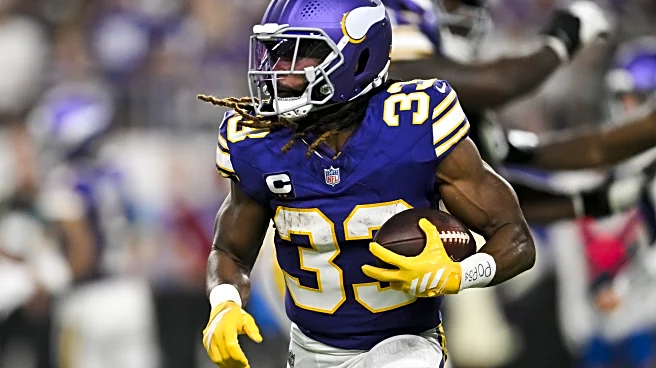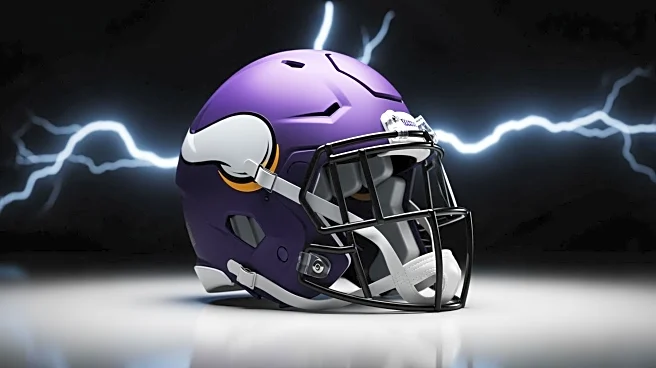What's Happening?
Zavier Scott, a running back for the Minnesota Vikings, has been listed as a limited participant in practice due to a wrist injury sustained during the team's recent loss to the Philadelphia Eagles. Scott played
10 snaps, contributing four carries for four yards and one catch for two yards. The injury comes at a critical time as the Vikings prepare for a condensed week, with a game against the Los Angeles Chargers scheduled for Thursday. The team's running back depth is already strained, with Aaron Jones and Ty Chandler both on injured reserve. The Vikings may need to elevate Cam Akers or Corey Kiner from the practice squad to ensure adequate backfield support if Scott is unable to play.
Why It's Important?
Scott's injury adds to the Vikings' challenges in maintaining a robust lineup, particularly in the running back position. With key players like Aaron Jones and Ty Chandler sidelined, the team faces potential difficulties in executing their offensive strategy effectively. The decision to possibly elevate players from the practice squad underscores the team's need to adapt quickly to injuries and maintain competitive performance. This situation could impact the Vikings' ability to secure wins in upcoming games, affecting their standing in the league and playoff prospects.
What's Next?
The Vikings will closely monitor Scott's practice participation over the next two days to determine his availability for the game against the Chargers. If Scott is unable to play, the team will likely activate Cam Akers or Corey Kiner to fill the gap in the running back position. This decision will be crucial in ensuring the team has sufficient depth to compete effectively. The outcome of Scott's injury status will influence the Vikings' game strategy and could lead to adjustments in their offensive lineup.
Beyond the Headlines
The Vikings' handling of player injuries and roster adjustments highlights broader issues in sports management, including the importance of depth in team rosters and the impact of injuries on team performance. This situation also reflects the challenges teams face in maintaining player health and readiness, especially during condensed schedules. The team's response to these challenges could set precedents for how other teams manage similar situations.













